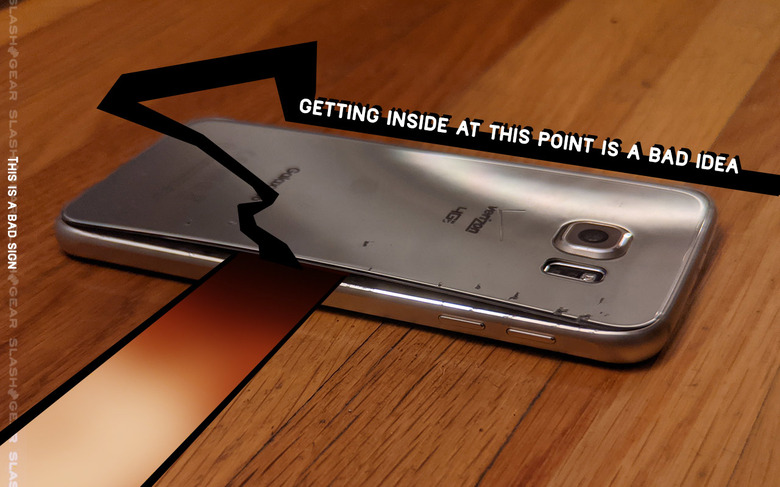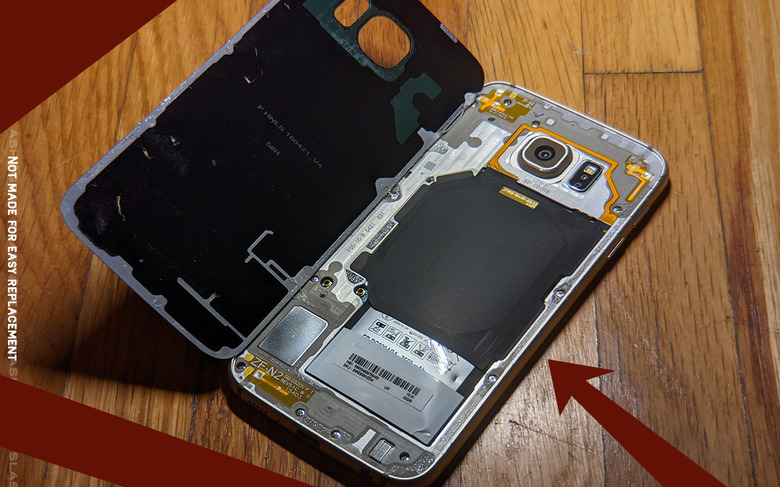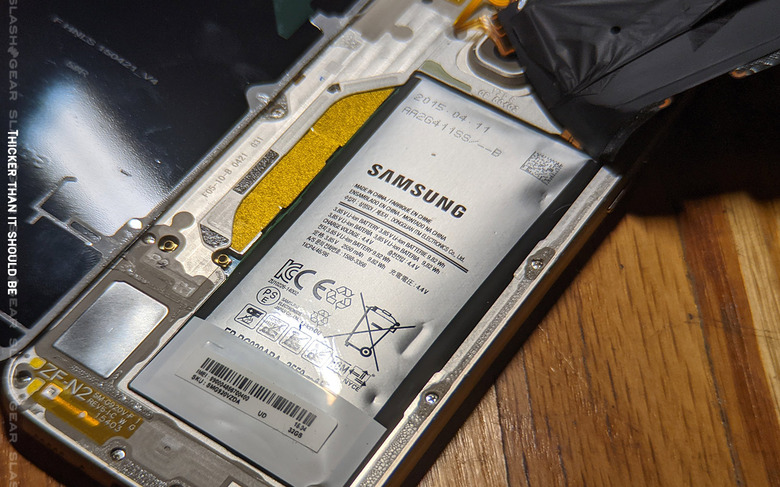This holiday, check your old phone for a fat battery
I found something in a junk drawer this week that was at first exciting, then alarming. In the drawer was an old smartphone that I'd not powered on for several years, at least. Cool, I'll just start it up and time travel back to the point at which I last turned it off, right? But wait a moment here... this phone is significantly thicker than it was when I last saw it. This is not good.
Why did this phone get thick?
The thickness came from a chemical failure of the device's lithium ion battery. I'd never opened this device before – I never had a reason. The only reason a person might open up a device like this would be to fix a component inside, or replace a component inside.
We've seen this sort of thing happen in a bunch of phones over the past decade, from all sorts of manufacturers. Most of the time we see this sort of thing happen, it's because new phone users are working with off-brand plugs and such.
With a phone that's been left in a drawer for several years, there's a chance the chemical-based setup within will... fail. If you see this sort of thing happen, you have a few options and at least one NON-OPTION.

What to avoid
One NON-OPTION is charging the device. Do not charge the device. Do not plug your phone in to any sort of wire, nor set your device on any sort of wireless charger. You absolutely do NOT want to agitate the battery package if at all possible.
Can I fix a swollen battery? No, you can not fix a swollen battery. The deed is done. The only thing left to do is isolate the battery and/or the phone with the battery inside before you contact a professional.
Do NOT put your phone in the fridge or make any attempt to "cool it down." The expansion is not temperature-dependent. The expansion cannot simply be reversed.
Do not do ANYTHING that may result in you piercing the battery's protective layer. If you do that, the battery may explode and start a fire. See our feature Where to put your old phone batteries to see some explosions, courtesy of batteries that've been disposed of incorrectly.

What needs doing
It is not easy to open most smartphones not meant to be opened – especially one like this, held together with glue AND clips, with no easily accessible screws. The manufacturer of this phone, Samsung, did not build this phone with the intent that it be easily opened or its hardware replaced (or even removed) by the average user.
As such, you'll more than likely want to seek the assistance of a professional. Gadget repair specialists are used to seeing this sort of thing – it happens far more often than you'd think. They'll know how to safely remove the battery and potentially replace the battery IF that is possible.
There's a real possibility that your phone will need to be brought to your city's official landfill. You may want to call ahead, as your city's waste management specialists will want to take special care of the battery and the phone to avoid an explosion and/or fire.

What if today is a holiday?
If you find an expanded battery in a smartphone and it is a holiday, chances are your local battery-handling professional won't be available to dispose of your fire hazard of a phone. The LEAST you can do is place the battery (or the phone with the battery inside) in a safe place. Isolate the phone and/or the battery – away from paper, away from anything flammable.
Get the device outside as quick as possible if you can. Put the device in a fireproof container, like a metal bucket with a layer of sand inside. Above all else – get this thing isolated so WHEN it starts on fire, it'll cause minimal damage.
This advice was as good a decade ago as it is today. New smartphones, tablets, laptops, wearables, etcetera, still use lithium ion batteries, and lithium ion batteries still fail.
Take caution, and don't take a risk. This one's full of fire.
